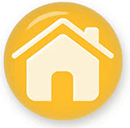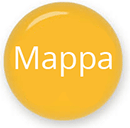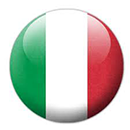|
Piazza della Sala |



|
Piazza della Sala: The Sala district is Pistoia's commercial hub and centres around this square, which was named after the Sala (curtis domini regis) building that stood here in the Longobard period (8th cent.). This building was the Palazzo del Gastaldo, or Governor's Palace. During the time of the communes (11th-12th cent.), the Sala district became a trading centre housing a food market and craft workshops. The area's trade 21 vocation is reflected in the street names: Via del Cacio (cheese), Via di Stracceria (rags), Sdrucciolo dei Cipollini (onions), Via dei Fabbri (blacksmiths), Via degli Orafi (goldsmiths) and Via del Lastrone, a reference to the big stone slab (“lastrone”) from which fish used to be sold. In the mid-15th century the square was paved over, but by the late 16th century it had become too small to contain the market and needed to be enlarged: a block of houses was duly demolished and the greengrocery stalls moved in. Metal stalls (supplied by Officine Michelucci) were introduced in the late 1800s, their place taken by masonrywork structures in 1937. Following the damage done during World War II air raids, the stalls were replaced yet again by a new concrete structure. Restoration work completed in 1986 has restored the square's original appearance. Here and in neighbouring streets many shops still retain their medieval appearance with their wooden shutters, brick-built counters for the display of goods, and overhead canopies. The area still comes to life every morning with its colourful fruit and vegetable stands, shops, cafès and restaurants. The nearby Piazzetta dell'Ortaggio was once the site of the Jewish Ghetto, records of which date back to the 18th century. A work in bronze (Giro del Sole, "Around the Sun"), by Pistoian sculptor Roberto Barni, was placed in the middle of this square in 1996. |
|
Pozzo del Leoncino: The Renaissance well at the centre of the square, designed by Cecchino di Giorgio in 1453, is a reworking of the earlier, less showy version. It has a circular parapet and two columns surmounted by an architrave decorated with the crests of the Capponi, Ridolfi and Da Diacceto families along with emblems of the Opera 22 di S. Iacopo (border and niche): an altogether worthier centrepiece for this prestigious location. In 1529 a stone lion holding the town crest with its left paw was added to the architrave (the leoncino after which the well is named). |
|
Palazzo del Capitano del Popolo: The late 13th-century "Palace of the Captain of the People" has undergone various architectural alterations which have changed its three basic features: the corner tower, the tower-house and a lower block, traces of which can still be seen in the large paired windows. It now houses private homes and shops. |


| CNA Pistoia - Impresa+s.coop. Realizzato da SIS Informatica. |